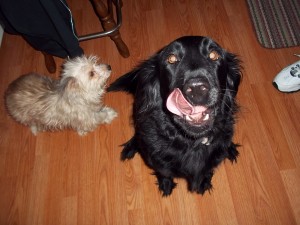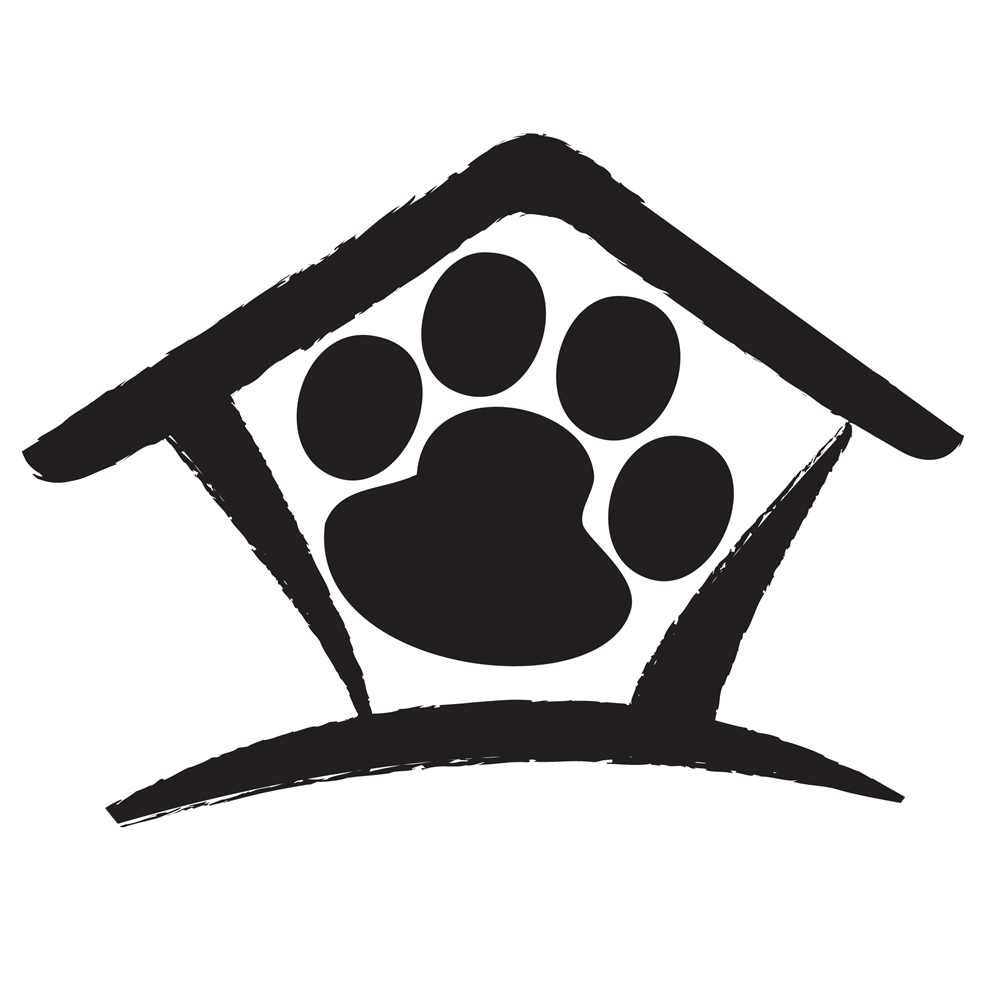Training young puppies is an important part of being a dog mom or dad. If you put in consistent and correct work now, you’ll reap the benefits later.
A word of caution: don’t let puppy breath, puppy whimpers and all the other little cute noises get in the way of training from the get-go.
Training Young Puppies – First Things First
When we talk about training, we’re not talking about training puppies 5 weeks old. However, around 8 weeks, most puppies can start to learn basic concepts.
Wondering what type of training we’re talking about? Simple things like:
- Sit
- Wait
- Stay
- Down
- Safe Handling
- Positive Socialization
These are common things your puppy can start learning soon after you bring him home.
In addition, you can start to teach your puppy good potty manners and routine eating habits.
You can introduce a leash and collar to your puppy and start working on leash manners. These are all things we address in our in-home puppy training classes.
 Training Young Puppies – Adoption
Training Young Puppies – Adoption
Pet parents who have the privilege of either purchasing, adopting or rescuing a young puppy will be starting with a clean slate so to speak.
We recommend waiting at least 8 weeks before separating a pup from his mother and siblings but we understand some individuals obtain them about 6 weeks old.
If you do add a 6 week old puppy to your family, be sure to consult your veterinarian about vaccinations. Many vets will recommend keeping your puppy away from other dogs and away from dog parks until they reach a certain age. Young puppies are susceptible to a host of viruses and ailments so be sure to take precautions.
Below are some important topics to consider when training young puppies:
Training Young Puppies Good Potty Habits
Dogs and puppies that are taught to potty outside (or on potty pads) from the beginning will make better house guests. If your puppy starts to learn that peeing and pooping all over the place is ok, that creates major problems. Teaching good potty habits takes consistency and patience.
We can teach you the in’s and out’s of when to feed and offer water and when to pull it away. Once you start to see the relationship between eating/drinking and pooping/peeing, you can understand how you can use that in your training.
Establishing Consistent Feeding and Watering Routines
Training your puppy can start with feeding time. Our methods allow your dog or puppy to learn the right way to behave as you prepare his food. This gives you time to bond with your new friend and provides a positive training session for him. Also, you’ll see the difference between free feeding and set feeding and why we prefer set feeding.
Training Young Puppies To Sleep In A Designated Sleeping Location (Crate)
We recommend you train your puppy to sleep in a crate. It’s safe and secure and your puppy will start learning boundaries and routine. Your puppy will have his own spot to call his own and he’ll have a safe and quiet place to sleep and hang out. Also, if things ever get chaotic in your home or your puppy feels unsure about a situation, the crate can act as his den and security blanket.
We recommend placing the crate in a prominent area in the house, not a secluded spot away from everyone.
Safe and Gentle Handling
Puppies should feel secure and safe when you carry or handle them. Children should be taught to handle the puppy gently and how to be respectful of his space. Children should learn to not hover over the puppy and to not crowd him constantly.
Constructive Playtime
If a puppy is taken away from their mom too early, this creates problems now, and down the road.
Your puppy might not learn bite inhibition which could lead to biting and nipping problems. You’ll need to teach your puppy ‘easy’ like their mom and siblings would from the very beginning.
Puppies and dogs have distinct ways of playing. Herding breeds play different than Pugs, Rottweilers or Labradors. Study up on your particular puppy breed and if he’s a mutt, well you’ve got the best of everything!
Playtime is important and should be encourage daily. Training can take place during playtime as well so take advantage of every situation you can for training.
Training Young Puppies Positive Socialization
Thousands of dogs end up in the shelters and euthanized everyday for reasons that start with improper socialization.
When you shelter a dog and fail to give him time to explore his world in a safe way you create a very unhappy dog.
When you keep a dog chained up in your yard or confined to a small part of your house, you create an unbalanced dog.
If you keep your dog away from your friends and guests, you create a timid, shy and possibly aggressive dog.
These are all examples of improper socialization.
These all lead up to dogs that could bite or become obnoxious, aggressive or be riddled with anxiety.
Starting from day one, even if your dog isn’t a puppy, you can start to get him on the right track and become a better, happier and healthier dog.
The puppy’s rule of twelve is something I rely on when I train dogs and puppies. Margaret Hughes, the woman that published Puppy’s Rules of Twelve was spot on with her wisdom. We encourage you to start implementing these things from day one with your new puppy (or adult dog).
Puppy’s Rule of Twelve
Puppies need a great deal of socialization at an early age to help them grow up into well-adjusted companions. The list of activities below was developed as a fun way to properly socialize your new dog.
Make sure all experiences are safe and positive for the puppy. Each encounter should include treats and lots of praise. Slow down and add distance if your puppy is scared!
By the time a puppy is 12 weeks old, he/she should have:
Experienced 12 different surfaces: wood, carpet, tile, cement, linoleum, grass, wet grass, dirt, mud, puddles, deep pea gravel, grates, uneven surfaces, on a table, on a chair, etc.
Played with 12 different objects: fuzzy toys, big and small balls, hard toys, funny sounding toys, wooden items, paper or cardboard items, milk jugs, metal items, car keys, etc.
Experienced 12 different locations: front yard (daily), other people’s homes, school yard, lake, pond, river, boat, basement, elevator, car, moving car, garage, laundry room, kennel, veterinarian hospital (just to say hi and visit, lots of cookies, no vaccinations), grooming salon (just to say hi), etc.
Met and played with 12 new people (outside of family): include children, adults (mostly men),elderly adults, people in wheelchairs, walkers, people with canes, crutches, hats, sunglasses, etc.
Heard to 12 different noises (ALWAYS keep positive and watch puppy’s comfort level—we don’t want the puppy to be scared): garage door opening, doorbell, children playing, babies screaming, big trucks, loud motorcycles, skateboards, washing machine, shopping carts, power boat, clapping, loud singing, pan dropping, horses neighing, vacuums, lawnmowers, birthday party, etc.
Been exposed to 12 fast moving objects (don’t allow puppy to chase): skateboards, roller-skates, bicycles, motorcycles, cars, people running, cats running, scooters, vacuums, children running, children playing soccer, squirrels, cats, horses, cows, etc.
Experienced 12 different challenges: climb on, in, off, and around a box; go through a cardboard tunnel; climb up and down steps; climb over obstacles; play hid and seek; go in and out a doorway with a step up or down; exposed to an electric sliding door; umbrella; balloons; walk on a wobbly table(plank of wood with a small rock underneath); jump over a broom; climb over a log; bathtub (and bath); etc.
Handled by owner (and family) 12 times a week: hold under arm (like a football), hold to chest, hold on floor near owner, hold in-between owner’s legs, hold head, look in ears and mouth, touch in between toes, hold and take temperature (ask veterinarian), hold like a baby, trim toe nails, hold in lap, etc.
Eaten from 12 different shaped containers: wobbly bowl, metal, cardboard box, paper, coffee cup, china, pie plate, plastic, frying pan, Kong, treat ball, spoon fed, paper bag, etc.
Eaten in 12 different locations: back yard, front yard, crate, kitchen, basement, laundry room, bathroom, friend’s house, car, school yard, bathtub, up high (on work bench), under umbrella, etc.
Played with 12 different puppies (or safe adult dogs) as much as possible.
Been left alone safely, away from family and other animals (5-45 minutes) 12 times a week.
Experienced a leash and collar 12 different times in 12 different locations.
Even if your puppy is over 12 weeks old he/she will benefit from his family introducing and implementing these activities. Start today with something small and gradually increase what you do.
Start socialization right away!
By Margaret Hughes – Positive Paws Dog Training 2002
Contact us if you need help with dog training in Muncie, Yorktown, Anderson or Hartford City. Our private sessions are done in the comfort of your own home and you don’t have to take your puppy or dog anywhere.
Dogs should be flea free and updated on all vaccinations appropriate for their age.
Happy Training,
Kelley Stewart, CEO|Pet Sitter
sit-stay-play In-home pet sitting & more.LLC
P.S. Start 2017 right and book training sessions for your new puppy! Book now.

